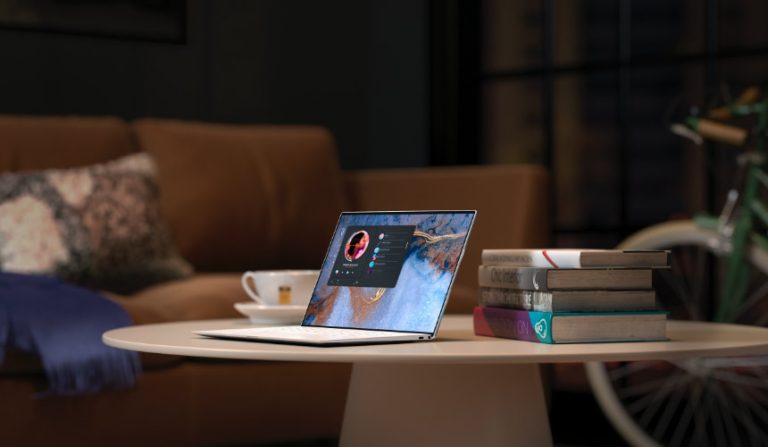If you run a small business, “being online” is no longer optional — it’s how customers discover, evaluate, and buy from you. The digital landscape gives small businesses a unique advantage: with smart, consistent execution you can compete with bigger brands without a massive ad budget. But the channels, tools, and best practices keep evolving. This guide cuts through the noise and lays out the essential digital marketing strategies for small businesses that actually move the needle — from website and SEO to social media, email, paid ads, local optimization, analytics, and conversion tactics.
Below you’ll find practical, step-by-step actions, real-world examples, key stats you can use to persuade stakeholders, and an FAQ. Read it as your playbook for turning online activity into measurable growth.
1. Build a fast, mobile-first website that converts
Why this is priority #1
Most customer journeys start on your website. Mobile traffic now accounts for the majority of global web visits — if your site is slow or hard to use on phones, you’re losing customers before they know you exist. Make sure your site is optimized for speed, mobile layout, and clarity of action (calls-to-action, contact, purchases).
Actionable steps
- Use a responsive theme and test mobile UX (buttons large enough, single-column content for phones).
- Aim for under 3 seconds page load; run tests with Google PageSpeed Insights and GTmetrix.
- Simplify navigation: clear header, search, and a primary CTA (book/call/cart).
- Build essential pages: Home, Services/Products, Pricing (or “How it works”), About, Contact, Blog, and a simple Privacy Policy.
- Use structured data (Schema.org) for local business, product, and review markup to improve SERP visibility (rich snippets).
Real-world example:
A local café replaced a clunky menu PDF with a fast HTML menu page and added prominent “Order now” and “Reserve” buttons — website conversions rose 35% in 30 days.
2. Master local SEO and Google Business Profile (GBP)
Why local SEO matters
Many searches have local intent, and “near me” queries drive high-converting foot traffic and calls. Optimizing for local search ensures your business appears in the Local Pack and map results when shoppers are ready to buy. Research shows massive volume for local queries and high conversion from those searches. BacklinkoSEO.com
Actionable steps
- Claim and fully optimize your Google Business Profile: correct NAP (Name, Address, Phone), business hours, services, photos, and categories.
- Request and respond to customer reviews (timely, polite, and specific).
- Add consistent citations across local directories (Yelp, Bing Places, Facebook, TripAdvisor if relevant).
- Create localized landing pages for different neighborhoods or services (e.g., “Tax consultant in Nairobi” with local schema).
- Use “near me” and local phrases naturally in titles and meta descriptions.
Real-world example:
A small plumbing business ensured consistent NAP across 40 citations and optimized GBP photos and services; within three months they moved into the Local Pack for “emergency plumber [city]” and doubled monthly inbound calls.
3. Content marketing: build topical authority (not just blog posts)
The right approach to content
Content is not simply publishing blog posts — it’s building topical authority that helps search engines and customers find and trust you. Use a hub-and-spoke (topic cluster) model: authoritative pillar pages + supporting blog posts, FAQs, and case studies. Focus on search intent: informational (how-to), navigational (brand queries), and transactional (buy/compare).
Actionable steps
- Create 3–5 pillar pages (e.g., “Small Business Tax Basics”, “How to Start Accounting for a Startup”, “Digital Marketing for Local Businesses”) that comprehensively cover a topic.
- Produce supporting posts that answer specific long-tail questions and link back to the pillar.
- Use tools (Google Search Console, Ahrefs, SEMrush, or free keyword planner) to find keyword intent and low-competition long-tail phrases.
- Include real-world case studies with numbers — they build credibility and are highly shareable.
- Add downloadable assets (checklists, templates) in exchange for email signups to capture leads.
Real-world example:
A boutique accounting firm created a “Startup Tax Guide” pillar page and 12 supporting posts (entity selection, filing deadlines, common credits). Organic search traffic to the site increased 82% in six months and generated qualified leads from startups.
4. Email marketing & automation (high ROI, low cost)
Why small businesses should prioritize email
Email consistently delivers one of the best ROI figures in digital marketing — for many businesses it’s the most reliable channel to drive repeat purchases and nurture leads. Industry studies show email ROI often returns many multiples of spend. OptinMonsterLitmus
Actionable steps
- Build lists ethically: website popups (timed or exit-intent), gated content, and point-of-sale signups.
- Segment your lists by behavior and lifecycle (new lead, active customer, lapsed customer).
- Create automation flows: welcome series, cart recovery, re-engagement, and post-purchase follow-up.
- Personalize messages (first name, past purchases) and A/B test subject lines and CTAs.
- Measure open rates, click-through rates, conversion rates, and list growth.
Real-world example:
An online store implemented an abandoned cart email series and recovered 12% of lost carts in the first month, increasing overall monthly revenue by 8%.
5. Social media strategies tailored to small business goals
Pick platforms by business goals and audience
Don’t chase every social network. Choose platforms where your target customers spend time and match content type to channel: visual content for Instagram and TikTok, thought leadership and B2B connections on LinkedIn, frequent customer updates and events on Facebook. Paid social gives precise targeting for local and interest-based campaigns.
Actionable steps
- Define platform goals: awareness, lead generation, direct sales, community building.
- Create a realistic content cadence (start 2–3 posts/week for small teams). Batch content production.
- Use short video — video adoption is huge and provides strong ROI for engagement. HubSpot
- Schedule posts with tools like Buffer, Hootsuite, or Later; use platform analytics weekly.
- Test small ad budgets (e.g., $5–$10/day) for local promotions and retarget site visitors.
Real-world example:
A neighborhood yoga studio ran a $200 Facebook/Instagram campaign to promote a new evening class — they sold out the 20 spots and gained 150 new followers, with a cost-per-signup that beat their offline flyer distribution.
6. Paid media: Google Ads and social ads done efficiently
When to use paid advertising
Paid search and social ads scale visibility quickly, especially for time-bound promotions, competitive keywords, or immediate local demand. The trick for small businesses is disciplined testing, tight audience targeting, and clear conversion tracking.
Actionable steps
- Start with search campaigns for high-intent keywords (e.g., “tax consultant near me”, “emergency plumber [city]”) and set clear conversion goals (form fills, calls, purchases).
- Implement conversion tracking (Google Ads, Facebook Pixel / Conversions API) to attribute results.
- Run small experiments: 2–4 ad variations, small daily budgets, test landing pages.
- Use retargeting to capture visitors who didn’t convert the first time.
- Optimize for ROAS and CPA — pause underperforming keywords and scale winners.
Real-world example:
A B2B consultant tested two ad headlines and two landing pages for a lead magnet; improving copy and reducing form fields lowered cost-per-lead by 46%.
7. Reviews, reputation, and customer experience optimization
Why reputation matters
Reviews impact search visibility, click-through rates from search, and purchase decisions. A steady flow of high-quality reviews builds trust and helps you rank in local packs.
Actionable steps
- Ask for reviews after a positive interaction (automated email or SMS).
- Make leaving a review easy — provide direct links to Google, Facebook, or industry-specific directories.
- Respond to reviews (positive and negative) promptly and professionally. Publicly address issues and offer to take complex problems offline.
- Highlight positive testimonials on your website and social channels.
Real-world example:
A home services company turned on a post-job SMS that asked customers to rate the service; within 60 days they accumulated 120 Google reviews and improved local search rank.
8. Use data and analytics — measure what matters
Key metrics every small business should track
Don’t collect vanity metrics. Focus on metrics tied to revenue or clear business outcomes: organic visits, conversion rate, cost-per-acquisition (CPA), lifetime value (LTV), and return-on-ad-spend (ROAS).
Actionable steps
- Set up Google Analytics 4 and link it to Google Ads and Search Console.
- Define conversions (form submissions, phone calls, purchases) and track them.
- Create a simple dashboard: traffic by channel, conversions by channel, CPA, and top-performing landing pages.
- Run monthly review meetings to optimize campaigns and content based on data.
Real-world example:
A retailer used GA to find that organic blog traffic converted at 2.8x the site average; they invested in producing two new product-guide posts and increased organic revenue by 27% over 4 months.
9. Emerging tools: video, AI, and chat automation
Use new tech without losing human touch
AI and automation can accelerate content production, customer support, and personalization — but quality and human oversight are essential. Video content continues to gain importance as attention shifts to short-form and how-to formats. HubSpotLifewire
Actionable steps
- Use short-form video (15–60s) to demonstrate products, share quick tips, and feature customer testimonials.
- Deploy simple chat widgets for FAQs and lead capture; escalate to a human when needed.
- Use AI for idea generation, A/B copy variants, and metadata suggestions — always edit and humanize outputs.
- Test AI-powered ad tools and scheduling tools to reduce manual workload.
Real-world example:
A law firm used a short explainer video for their “free consultation” offer on LinkedIn and saw a 45% increase in consultation requests compared with a text-only campaign.
10. Putting the plan together: 90-day launch checklist
Week 1–2: Foundation
- Audit website speed and mobile UX.
- Claim/update Google Business Profile and major directories.
- Set up Google Analytics 4 + Search Console + Facebook Pixel.
Week 3–6: Content & Email
- Publish 1 pillar page + 3 supporting posts.
- Create a lead magnet and set up an email welcome flow.
- Start a small social campaign to promote the pillar content.
Week 7–10: Paid tests & Reviews
- Launch search ads for 5–10 high-intent keywords with small budgets.
- Run social retargeting for website visitors.
- Implement review-ask automation post-transaction.
Week 11–12: Optimize & Scale
- Review data: pause low performers, scale winners.
- Add short-form video content to top social platform.
- Plan next quarter content and paid calendar.
Relevant statistics you can cite (select highlights)
- Mobile traffic now accounts for a majority of global web visits — mobile market share around 59–62% in 2025. StatCounter Global StatsMobiLoud
- Email marketing delivers outsized ROI; many studies estimate ~$36 returned per $1 spent on average (varies by report). Email remains one of the highest-ROI channels. OptinMonsterConstant Contact
- Local search is massive: over 1.5 billion “near me” searches per month, with high conversion to store visits; local intent drives valuable foot traffic. SEO.comBacklinko
- Video adoption and ROI are growing: a large percentage of businesses use video and many video marketers report positive ROI. HubSpot
- Small and midsize businesses are rapidly adopting tech and AI for marketing and operations — e.g., a 2025 survey found a meaningful share of SMBs using AI tools for marketing and customer service. Lifewire
Frequently Asked Questions (FAQ)
Q: How much should a small business budget for digital marketing?
A: Budgets vary by industry and goals. As starting guidance: 5–12% of gross revenue for established small businesses is common; startups may spend more on growth. Prioritize a strong website, local SEO, and an email system first, then scale paid ads once you have conversion tracking.
Q: Which channel gives the fastest results?
A: Paid search (Google Ads) typically brings rapid visibility for high-intent queries, but it costs money. Local SEO + Google Business Profile can provide steady, low-cost leads and often converts very well for local services.
Q: How fast will I see results from SEO?
A: SEO is medium to long-term. Expect initial improvements in 3–6 months for new content or technical fixes; significant organic growth usually takes 6–12 months depending on competition.
Q: How often should I post on social media?
A: Consistency beats frequency. Start with 2–3 high-quality posts per week on one or two platforms. For platforms like TikTok or Instagram Reels, higher frequency (3–5 per week) can help accelerate discovery, but quality and experimentation matter most.
Q: Should I use all tools mentioned (email, social, paid ads)?
A: Use only those that align with your audience and goals. A simple stack for many small businesses: fast website + GBP + email platform (for automation) + one social channel + small paid test budget. Expand once you have systems and measurement in place.
Conclusion — prioritize, measure, and iterate
Digital marketing for small businesses is deceptively simple: pick a few high-impact channels, set measurable goals, and optimize relentlessly. Start with a mobile-first website, own your local search presence, build an email list, and test paid media in small, measurable experiments. Use content to build trust and video/automation to scale your time. Above all, track conversions and focus on channels that produce profitable customer acquisition.




